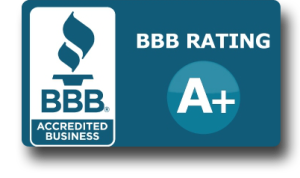Should I Get a Reverse Mortgage? The Motley Fool
A reverse mortgage isn’t right for everyone and it does have some drawbacks, but for certain people, it can be a solid solution to retirement income needs. by Selena Maranjian.
You can go other places, all right — you can live on the other side of the world, but you can’t ever leave home. — Sue Monk Kidd
When you need income in retirement and Social Security and your savings just aren’t enough, one option worth considering is a reverse mortgage. It does typically involve giving up your home, but you also get to stay in it.
Reverse mortgages can be powerful retirement improvers, but they’re not without some downsides worth considering. If you learned about reverse mortgage pros and cons in the past and had decided against the idea, know that there have been some reforms in the past few years that make the upsides stronger. Here’s a look at why you might or might not want to get a reverse mortgage.
Reverse mortgages explained. Getting a reverse mortgage will seem a lot like selling your home to a lender in exchange for money (in the form of a lump sum, an income stream, or a line of credit) while also being permitted to remain in the home for as long as you can. It’s technically a loan, though, with the amount borrowed not having to be repaid until you die, sell it, or stop living in the home (perhaps because you moved to a nursing home). At that time, the home can be sold to cover the debt — or your heirs can pay it off and keep the home.
Why you might get a reverse mortgage. So what’s the upside of a reverse mortgage? Well, the money. We all will need some income in retirement, and Social Security will only go so far.
On top of that, reverse mortgage income is often tax-free, which is another big plus. And one more thing: Whereas some retirement funding solutions require you to sell and downsize your home or even to move to a less costly region, reverse mortgages let you stay in your home while receiving payments. That’s very preferable for many folks.
Why you might not want a reverse mortgage. Of course, like many things, reverse mortgages are not quite as perfect as they may seem. Here are some drawbacks to a reverse mortgage to consider:
Not everyone will qualify for a reverse mortgage. Many people do, though — especially if they’re 62 or older and own their homes entirely or owe very little on them.
A reverse mortgage may not offer you as much money as you’d hoped for. The amount you can borrow depends on a bunch of factors, such as how much longer you (and your spouse, if you have one) are expected to live, the value of the home, the equity you have in it, and prevailing interest rates.
There are closing costs, just as with regular mortgages, and they tend to be costlier than those for regular mortgages. The applicable interest rates tend to be higher as well, and interest charges are added to the balance of the loan over time. (Note, however, that you likely will never owe more than the value of the home when the reverse mortgage ends.)
While living in your home with the money you received from the reverse mortgage, you’ll still be responsible for expenses such as property taxes, home insurance, home repairs, and maintenance.
Once you leave your home, it will likely need to be sold to pay off the reverse mortgage. If you’d hoped to leave it to your children, you won’t be able to do so unless the reverse mortgage loan can be paid off in some other way.
Receiving income from a reverse mortgage might hurt your eligibility for various benefits, such as Medicaid and Supplemental Security Income
New and improved reverse mortgages. It’s worth noting that reverse mortgages are better options for retirees than they used to be, due to some reforms. For example, whereas those who got them used to be able to take out 100% of the available proceeds all at once, at the beginning, most people are limited to taking out no more than 60% in the first year. This can help prevent some people from spending too much too soon and ending up in potentially worse financially shape.
The qualification process has also gotten more stringent, with lenders now required to take a closer look at borrowers’ financial conditions, assessing their income, credit history, and other factors, to determine how well they’re likely to manage with a reverse mortgage. Protections for spouses have also been made stronger, to reduce the chance of surviving spouses defaulting and facing foreclosure.
If you decide you’re interested in a reverse mortgage, there’s more to learn about them. Be wary of aggressive reverse-mortgage sales pitches from salespeople who aren’t looking out for your best interests.
What to do. A reverse mortgage might serve you very well, but it also features a lot of drawbacks worth considering. Approach it with open eyes and be sure to also explore other alternatives. It’s not a bad idea to consult a financial advisor about it as well — and not one who sells reverse mortgages. (You can look for a fee-only one at www.napfa.org.)
Be sure to consider alternative ways to get income, such as via dividend-paying stocks, annuities, or perhaps a home equity loan. Social Security will offer some income in retirement, too. The average annual benefit is only about $16,000, but a little strategizing can increase the amount you ultimately collect from Social Security.
Mark Cuban predicts this will make someone a trillion dollars. Shark Tank’s Mark Cuban recently predicted that an emerging tech trend would make someone $1 trillion. That lucky future trillionaire is just the beginning — and the trend itself could be worth as much as $19.9 trillion.
Fortunately, this hasn’t yet gone mainstream — most people haven’t recognized the scale of opportunity here.
We believe that one market expert has the right answer for investors looking to get in early — and potentially win big.











Leave a Reply